
Recent nonprofit trends show that giving is on the decline, decreasing by 2.1% between 2022 and 2023. To keep donors around and retain their support, organizations have to grab supporters’ attention and make their communications stand out from the thousands of messages their audience receives each day.
The best way to accomplish this feat is through segmentation: the process of grouping your supporters based on their similarities and sending them targeted messages they’re more likely to respond to.
In this guide, we’ll explain how to develop a segmentation strategy so you can personalize your messaging and reach your target audience more effectively. Let’s get started!
1. Define your segmentation goals.
Any strong strategy starts with goal-setting. The purpose of your campaign should drive your segmentation efforts, providing context to how you group your supporters. For example, you may use segmentation to accomplish goals like:
- Increasing event attendance
- Upgrading gift amounts
- Converting one-time donors into recurring givers
- Engaging donors in other nonprofit activities, such as volunteering and advocacy
- Promoting new offerings through data-driven marketing campaigns
Nailing down your objectives first will provide focus to the rest of your campaign. Even though you may be reaching out to the same supporters, your segments may look very different based on what you’re trying to accomplish.
2. Select segmentation criteria.
Based on your goals, choose the segmentation criteria you’ll rely on to group your supporters. For example, to promote recurring giving, Double the Donation recommends segmenting your audience based on factors like:
- Interests and affinities. Chances are, your nonprofit offers many different services, covers several different sub-causes, or runs various projects at once. Reaching out to donors with appeals that mention their specific interests or updates on different areas of your organization may inspire them to become recurring givers. For example, an animal shelter may group supporters based on whether they’re most interested in supporting animal rescue, adoption, or facility upgrades.
- Communication preferences. Communicating with your supporters on their own terms shows that you value them as individuals and helps build long-term relationships with them. Survey your audience to determine whether they prefer email, direct mail, SMS messaging, or phone calls. Then, group them accordingly in your constituent relationship management system (CRM), and use the channels they indicate to promote recurring giving.
- Demographics. Segmenting supporters based on demographics like age or location can add an extra personal touch to your messages. For instance, you may invite potential recurring donors in your local area to tour your facility so you can further familiarize them with your organization.
- Engagement level. More engaged supporters are likely better candidates for recurring giving and would probably appreciate hearing from your nonprofit more often. Grouping your supporters by engagement level allows you to send opportunities to highly engaged donors so they can keep up their support and try to reinvigorate less engaged donors.
While these are some of the main segmentation strategies, they aren’t the only options available to your team. Other methods may include segmenting your donors based on giving history with groups for major, mid-level, and smaller donors or grouping them based on their donor lifecycle stage to separate newer donors from long-term supporters.
3. Enrich your database.
Deep Sync defines data enrichment as “the process of supplementing your first-party data with third-party data to confirm you have the most accurate, reliable, and comprehensive database possible.” If you’re missing any supporter information you need to reach your segmentation goals, enriching your database can fill those gaps.
When you enrich your database, you can create more precise segments, better understand your supporters, save resources by focusing on the audience members most likely to respond to your messages, and build stronger supporter relationships. The types of third-party data you can obtain through data enrichment include:
- Demographics
- Contact information
- Education
- Marital status
- Homeownership and property data
- The presence of children in the home
- Income
- Net worth
- Lifestyle information
For instance, if you want to segment donors based on their giving capacity, you can enrich your database with income and net worth data and group your donors based on these factors. Then, you can more easily identify major donor prospects and reach out to them with relevant fundraising appeals.
4. Create and implement your segments.
With a well-rounded database, it’s time to create your segments and put them to use. Depending on your goals, you can tailor the following types of communications to each segment:
- Fundraising appeals. Cater your fundraising asks based on donor giving capacity. You may invite major donors to participate in capital campaigns and send more general fundraising campaign communications to mid-level and smaller donors. Additionally, offer suggested donation amounts that align with each segment’s past contributions to encourage them to contribute and upgrade their giving.
- Newsletters. Consider sending email newsletters to your supporters based on how often they contribute or their involvement history. You may create a monthly newsletter for monthly donors, a quarterly newsletter for quarterly donors, and an annual newsletter for annual donors. Alternatively, you may develop different newsletters for donors, volunteers, beneficiaries, board members, and cause advocates.
- Social media posts. While you can’t send social media posts directly to supporters in different segments, you can still tailor your content to different audiences. For example, you may create a social media campaign that targets volunteers with the giving capacity to become major donors. Share infographics that explain the benefits of donating, and illustrate how previous volunteers have transitioned to major donors and made a larger impact using real supporter stories.
- Event communications. Sync your nonprofit event management platform with your constituent database so you can use your segments to inform your event communications. Distinguish between past and first-time event attendees in your pre-event and post-event messages to acknowledge each supporter’s unique event history. You can also use location segments to invite local attendees to more upcoming events and suggest accommodations for out-of-town guests.
- Impact updates. Keep donors informed on the projects and initiatives they’ve supported or are most interested in. Make sure to send all donors your annual impact report, but send smaller updates throughout the year that assure donors their contributions are making a difference.
Whether you’re looking to increase fundraising efficiency, keep donors engaged, promote events or programs, or anything in between, segmentation can help you accomplish these goals and create a better experience for your supporters at the same time.
5. Adjust your segments as needed.
Your segments represent your supporter base during a specific time period, meaning they might not remain relevant forever. For example, first-time donors who upgrade to recurring givers will now fall into a different segment and, as a result, will require different communications.
It’s up to your team to review and adjust your segmentation strategy regularly to ensure it’s still effective. To evaluate your segments, your nonprofit should:
- Review engagement metrics. Dig into your data to determine which segmented campaigns drive the best results. Look at metrics like email open rate, click-through rate (CTR), direct mail response rate, donor retention rate, fundraising totals, and event attendance, depending on the strategies you implement.
- Survey your audience. For a more qualitative analysis of your efforts, turn to your supporters. Gather their feedback on your segmentation strategy by asking them if your recent communications have resonated with them, engaged them, or inspired them to take action. Additionally, have them note any opportunities for improvement.
Use the data you collect to make changes to your segmentation strategy and messaging so your communications continue to help you build stronger relationships with your supporters.
In a world with so much content at our fingertips, it’s essential to make your nonprofit’s messaging stand out. While you can use artificial intelligence (AI) to help with the segmentation process, this exercise also helps you add that extra human touch by tailoring your communications to different supporter groups’ interests, preferences, history, and needs.
Gabrielle Perham, MBA
Gabrielle Perham is the Director of Marketing for Deep Sync. She joined the organization in 2017 and  brings more than 20 years of experience in strategic marketing, branding, communications, and sales enablement.
brings more than 20 years of experience in strategic marketing, branding, communications, and sales enablement.
With a roll-up-your-sleeves-and-get-it-done attitude and a big-picture mindset, Gaby loves solving marketing and business challenges. She leads the brand strategy for Deep Sync, which has included consolidating four longstanding brands under the Deep Sync banner. She nearly single-handedly implemented HubSpot company-wide and holds four HubSpot Academy Certifications. Additionally, she works cross-functionally with operations and product teams and is passionate about operational excellence and efficiency.
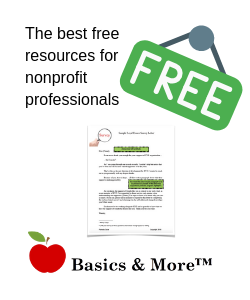
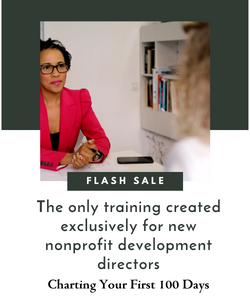


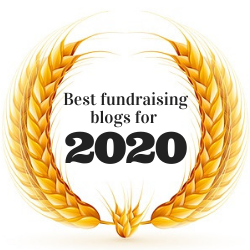


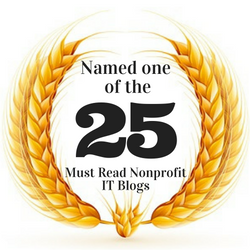
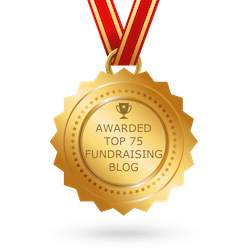








 I can’t wait to meet with you personally.
I can’t wait to meet with you personally.
Comments on this entry are closed.